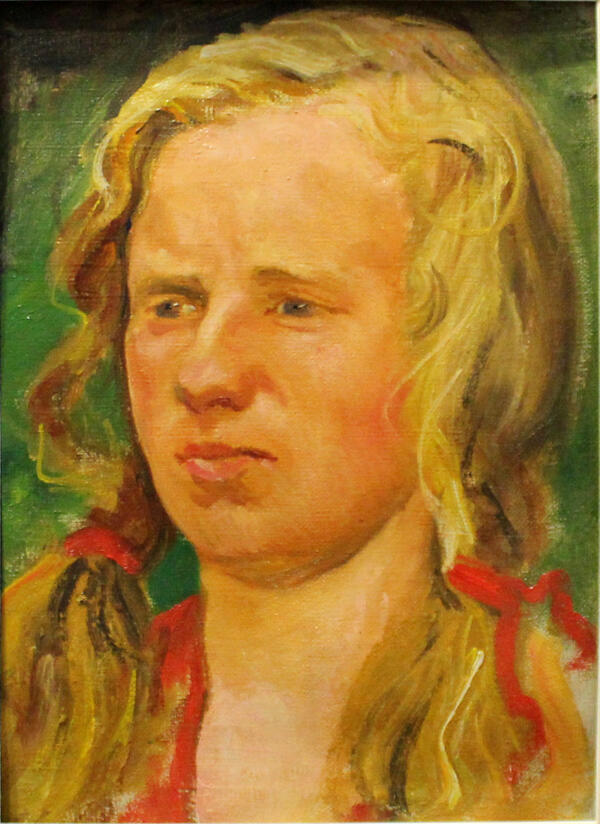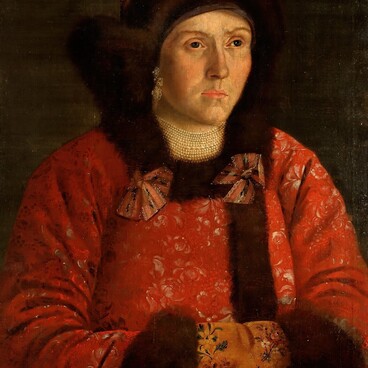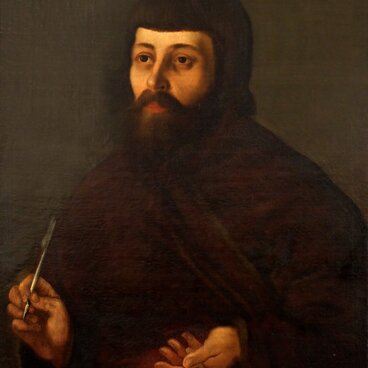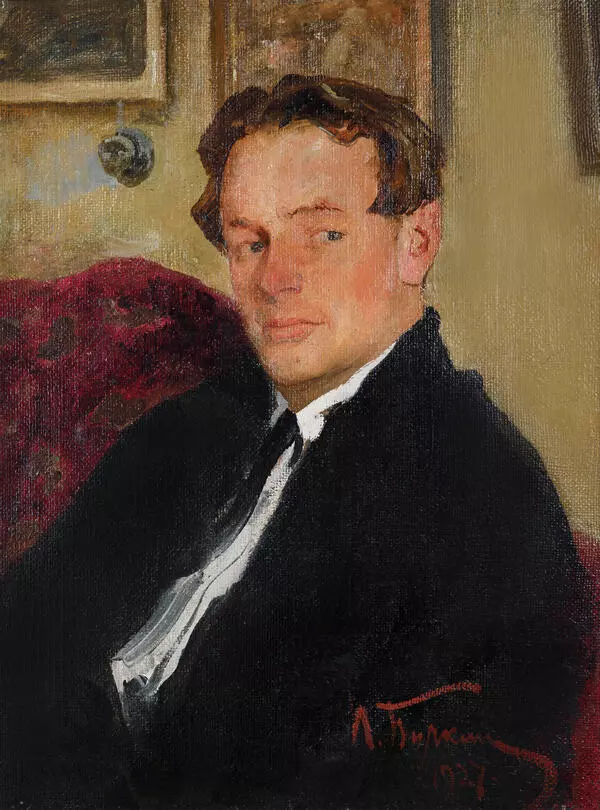The Uglich Museum houses a portrait of the local citizen Zinaida Dmitrievna Buchkina painted by her brother, the famous artist Pyotr Buchkin.
Pyotr Buchkin painted his sister, a teenage girl, when he came to Uglich in 1925. The portrait has a lively air as if painted in one sitting, but it lacks the light artisticity and posing typical of the image of their brother Mikhail. The sitter looks concentrated and reserved as if she is unwilling to participate in her brother’s project. The long light-colored locks are disheveled and carelessly fastened as if not with ribbons but with random patches.
Zinaida spent her life away from big cities. There was a lot of work for her to do at the old house and garden, but she also found time to sing old religious poems and study music. Like her brothers, she was also talented, but for her, art remained a hobby. Unlike her brothers — the painter Pyotr and the ballet artist Mikhail who moved to St. Petersburg — Zinaida Buchkina spent her entire life quietly in the house of their parents at the stream in Uglich. Perhaps, this resulted from the practical but somewhat cruel patriarchal tradition of parents keeping one of their children close to help them around the house and to care for them as they age.
Uglich became the city of large construction projects, the appearance of its streets changed, a hydroelectric power station and a watch factory were founded, while the aging Zinaida gradually became an invisible remnant of the past, of the world that had already disappeared. She worked as a nurse at the school that occupied the previously wealthy house of the Zimin merchants. One of its former students recalled episodes from the late 1960s,
Pyotr Buchkin painted his sister, a teenage girl, when he came to Uglich in 1925. The portrait has a lively air as if painted in one sitting, but it lacks the light artisticity and posing typical of the image of their brother Mikhail. The sitter looks concentrated and reserved as if she is unwilling to participate in her brother’s project. The long light-colored locks are disheveled and carelessly fastened as if not with ribbons but with random patches.
Zinaida spent her life away from big cities. There was a lot of work for her to do at the old house and garden, but she also found time to sing old religious poems and study music. Like her brothers, she was also talented, but for her, art remained a hobby. Unlike her brothers — the painter Pyotr and the ballet artist Mikhail who moved to St. Petersburg — Zinaida Buchkina spent her entire life quietly in the house of their parents at the stream in Uglich. Perhaps, this resulted from the practical but somewhat cruel patriarchal tradition of parents keeping one of their children close to help them around the house and to care for them as they age.
Uglich became the city of large construction projects, the appearance of its streets changed, a hydroelectric power station and a watch factory were founded, while the aging Zinaida gradually became an invisible remnant of the past, of the world that had already disappeared. She worked as a nurse at the school that occupied the previously wealthy house of the Zimin merchants. One of its former students recalled episodes from the late 1960s,




